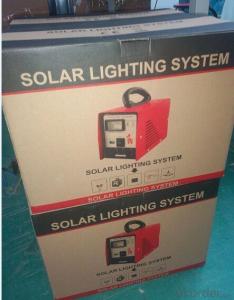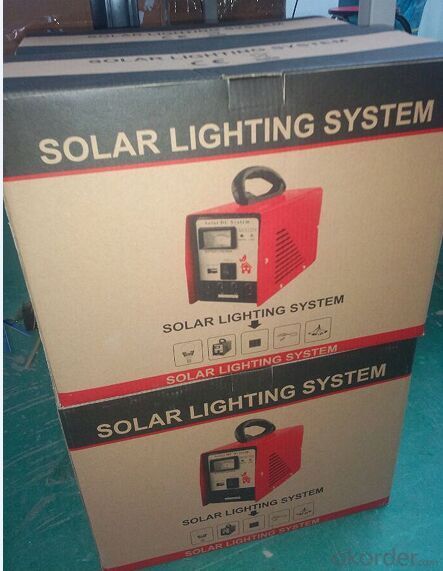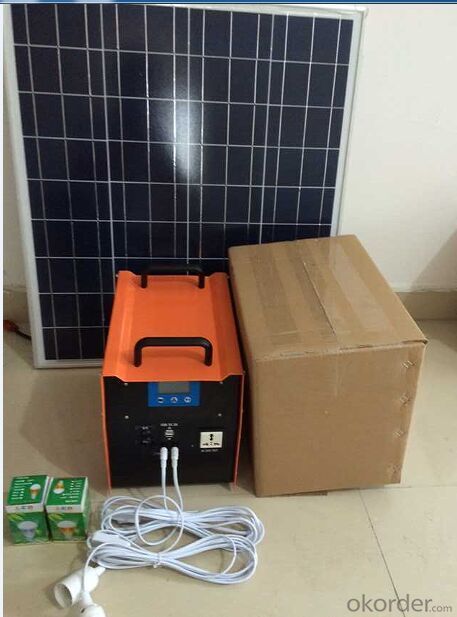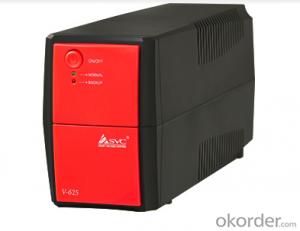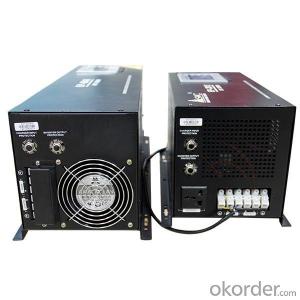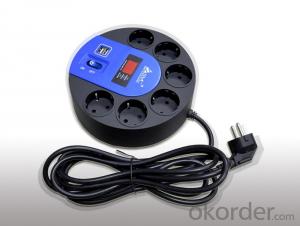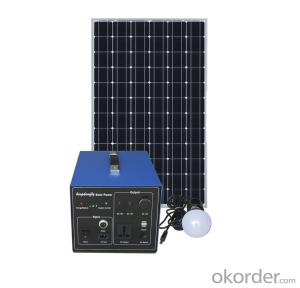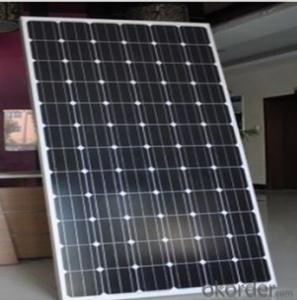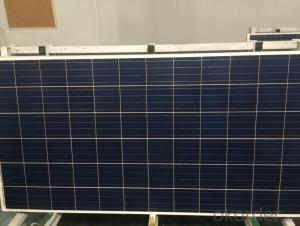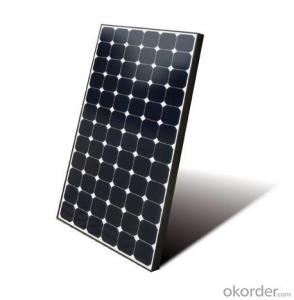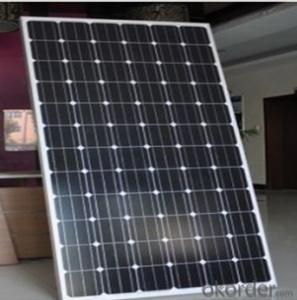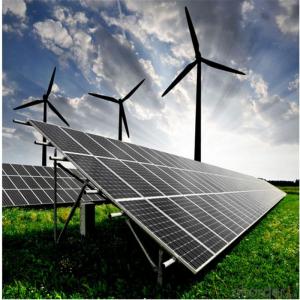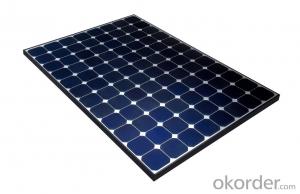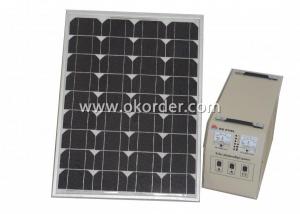500w Solar Energy Systems Home Solution Approved by TUV UL CE
- Loading Port:
- China main port
- Payment Terms:
- TT OR LC
- Min Order Qty:
- 1 pc
- Supply Capability:
- 100 pc/month
OKorder Service Pledge
OKorder Financial Service
You Might Also Like
Specification
500W Solar Home Solution Approved by TUV UL CE
Production description
PV array:
Convert sunlight instantly into DC electric power. Formed by the solar modules (also called photovoltaic
modules) in accordance with the system requirements for series and parallel.
Solar charge controller:
A charge controller may be used to power DC equipment with solar panels. The charge controller
provides a regulated DC output and stores excess energy in a battery as well as monitoring the battery
voltage to prevent over charge or over discharge. An inverter can be connected to the output of a charge
controller to drive AC loads.
Inverter:
Converts DC output power of photovaltaic soalr panels into standard AC power for use in the local off-grid
electrical network. It is a critical component in a photovoltaic system, allowing the use of ordinary
commercial appliances.
Battery banks:
Stores energy when there is an excess coming in and distribute it back out when there is a demand. Solar
PV panels continue to re-charge batteries each day to maintain battery charge.
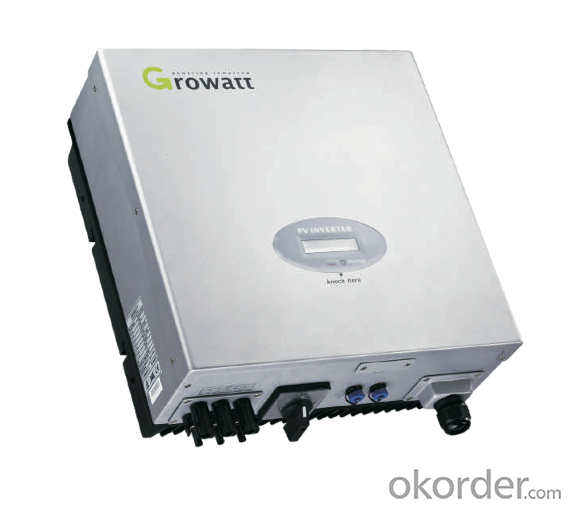
Feature
1.High conversion efficiencies resulting in superior power output performance.
2.Outstanding power output even in low light or high temperature conditions
3.Optimized design for ease of soldering and lamination
Physical characteristic
1. Rigorous quality control meets the highest international standards.
2. High-transmissivity low-iron tempered glass, strong aluminium frame.
3. Using UV-resistant silicon.
- Q: Are there any risks of electrical arcing with solar energy systems?
- Yes, there are risks of electrical arcing with solar energy systems. Electrical arcing occurs when there is a breakdown in the insulation of electrical components, resulting in the flow of electricity through air or other non-conductive materials. This can lead to a fire hazard and damage to the solar energy system. Some potential causes of electrical arcing in solar energy systems include faulty wiring, loose connections, and damage to the solar panels. These issues can result in an increased risk of electrical arcing, which can cause overheating, melting of components, and even electrical fires. To mitigate the risks of electrical arcing, it is crucial to ensure that the solar energy system is installed and maintained by qualified professionals who follow industry standards and regulations. Regular inspections and maintenance should be conducted to identify and address any potential issues that could lead to electrical arcing. Furthermore, the use of high-quality electrical components and proper grounding techniques can help reduce the risk of electrical arcing. Implementing safety measures such as circuit breakers, surge protectors, and arc fault circuit interrupters (AFCIs) can also provide additional protection against electrical arcing. In summary, while solar energy systems offer numerous benefits, it is important to be aware of the potential risks of electrical arcing. By ensuring proper installation, maintenance, and adherence to safety guidelines, the risks can be minimized, allowing for the safe and efficient operation of solar energy systems.
- Q: Can solar energy systems be used in areas with limited access to solar energy system financing options?
- Yes, solar energy systems can still be used in areas with limited access to solar energy system financing options. There are alternative financing options available such as leasing or power purchase agreements (PPAs) where the upfront costs are covered by a third-party provider. Additionally, there are government incentives and grants that can help offset the initial investment. In some cases, community solar programs or crowdfunding can also be utilized to make solar energy more accessible in areas with limited financing options.
- Q: How do solar energy systems impact energy resilience during natural disasters?
- Solar energy systems can significantly enhance energy resilience during natural disasters. These systems provide a reliable and independent source of electricity, enabling critical infrastructure and essential services to continue functioning even when the main power grid is disrupted. Solar panels can continue generating electricity as long as there is sunlight available, reducing the reliance on fuel-dependent generators and minimizing the risk of fuel shortages during emergencies. Additionally, solar energy systems can be paired with battery storage, allowing excess energy to be stored and used during nighttime or cloudy periods. This combination ensures a continuous power supply, enabling emergency response efforts, communication networks, and healthcare facilities to operate, thereby enhancing overall energy resilience during natural disasters.
- Q: Do solar energy systems require grounding?
- Yes, solar energy systems do require grounding for several reasons. Firstly, grounding helps to protect the system and its components from electrical faults, lightning strikes, and power surges by providing a safe path for excess electrical energy to dissipate into the ground. Additionally, grounding helps to minimize the risk of electric shock for individuals who may come into contact with the system. Overall, proper grounding is essential for the safe and efficient operation of solar energy systems.
- Q: Can solar energy systems be used in areas with limited access to backup systems?
- Yes, solar energy systems can be used in areas with limited access to backup systems. Solar energy systems are designed to generate electricity from sunlight, which means they can operate independently without relying on backup systems such as grid power or generators. These systems can store excess energy in batteries, allowing for usage during periods of low sunlight or at night. In remote areas with limited access to backup systems, solar energy can provide a reliable and sustainable source of power.
- Q: Can solar energy systems be used for powering outdoor lighting?
- Yes, solar energy systems can be used effectively for powering outdoor lighting. Solar-powered outdoor lighting systems are designed to capture sunlight during the day and convert it into electricity, which is stored in batteries. This stored energy is then used to power the outdoor lights during the night, making them energy-efficient and environmentally friendly. Additionally, solar-powered outdoor lighting systems do not require extensive wiring or electrical connections, making them easy to install and maintain.
- Q: What happens to excess energy generated by a solar energy system?
- Excess energy produced by a solar energy system can be either stored or sold to the grid. When a solar energy system generates more electricity than is being used, the surplus can be stored in batteries for future use. This stored energy can then be used when the solar panels are not producing enough electricity, such as during cloudy days or at night. Alternatively, if the solar energy system is connected to the electric grid, the surplus energy can be sent back to the grid. This process is called net metering. Under net metering agreements, the surplus energy is sent to the grid, and the solar system owner receives credits for the electricity they contribute. These credits can be used to offset the electricity consumed from the grid when the solar panels are not generating sufficient power. By either storing the excess energy or selling it back to the grid, solar energy systems ensure that no energy is wasted. This not only maximizes the efficiency and utilization of solar power, but also allows solar system owners to financially benefit from their surplus generation.
- Q: How does the efficiency of solar panels vary across different angles of sunlight?
- The efficiency of solar panels can vary across different angles of sunlight due to several factors. One factor is the incident angle of sunlight. Solar panels are most efficient when sunlight strikes them perpendicular to their surface. As the angle of sunlight becomes more oblique, the energy output of the panels decreases. This is because when sunlight strikes the panel at an angle, it has to travel a longer distance through the material, resulting in more absorption and reflection, and less energy conversion. Another factor is the tracking system of solar panels. Some solar panels have tracking systems that allow them to follow the sun's movement throughout the day, optimizing the angle of incidence. These tracking systems can significantly increase the efficiency of solar panels, as they ensure that the panels are always aligned with the sunlight, maximizing the energy output. Furthermore, the efficiency of solar panels can also be affected by the type of solar cell technology used. Different types of solar cells have varying sensitivities to the incident angle of sunlight. For example, monocrystalline silicon solar cells tend to have higher efficiencies at steeper angles of sunlight compared to polycrystalline or thin-film solar cells. In summary, the efficiency of solar panels can vary across different angles of sunlight due to factors such as incident angle, tracking systems, and the type of solar cell technology used. Optimizing the angle of incidence and implementing tracking systems can help maximize the efficiency of solar panels and increase their energy output.
- Q: Can solar energy systems be used in all locations?
- Solar energy systems can be used in most locations, but their efficiency and effectiveness may vary depending on factors such as sunlight availability, climate, and geographical location.
- Q: How do solar energy systems affect wildlife?
- Solar energy systems can have both positive and negative impacts on wildlife. On the positive side, solar energy systems can help reduce greenhouse gas emissions, which in turn reduces the impact of climate change on wildlife habitats. Additionally, solar panels can provide shade and shelter for certain species, and the land beneath solar installations can be used for biodiversity-friendly practices, such as planting native vegetation. However, there are also potential negative impacts, such as habitat disruption and loss due to land use changes and infrastructure development. It is important to carefully plan and design solar energy systems to minimize these negative effects and ensure the protection of wildlife.
Send your message to us
500w Solar Energy Systems Home Solution Approved by TUV UL CE
- Loading Port:
- China main port
- Payment Terms:
- TT OR LC
- Min Order Qty:
- 1 pc
- Supply Capability:
- 100 pc/month
OKorder Service Pledge
OKorder Financial Service
Similar products
Hot products
Hot Searches
Related keywords
